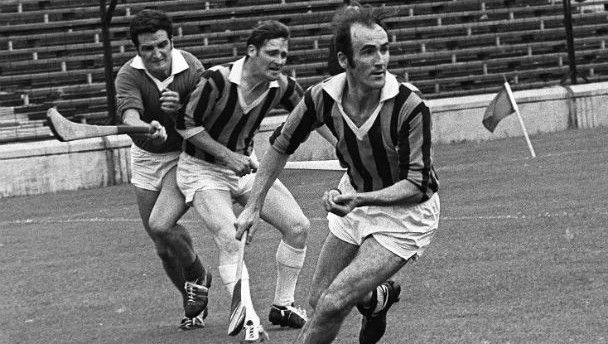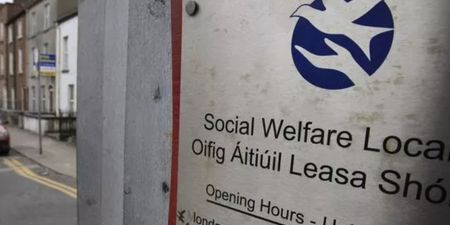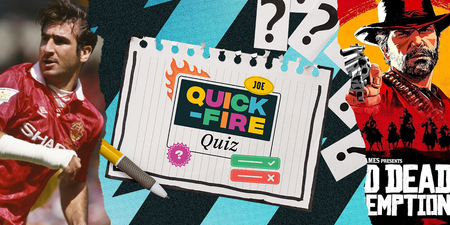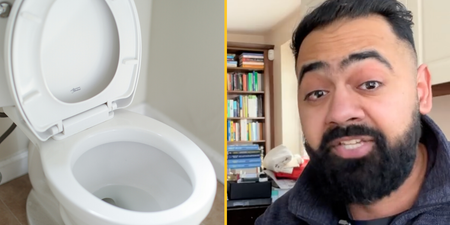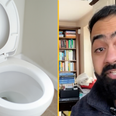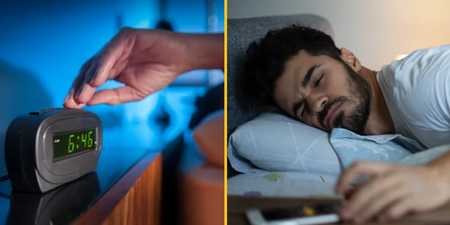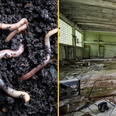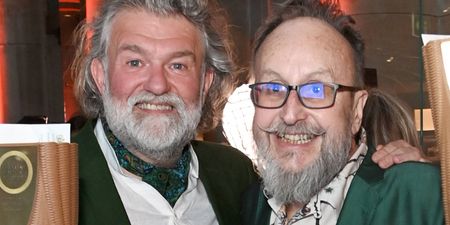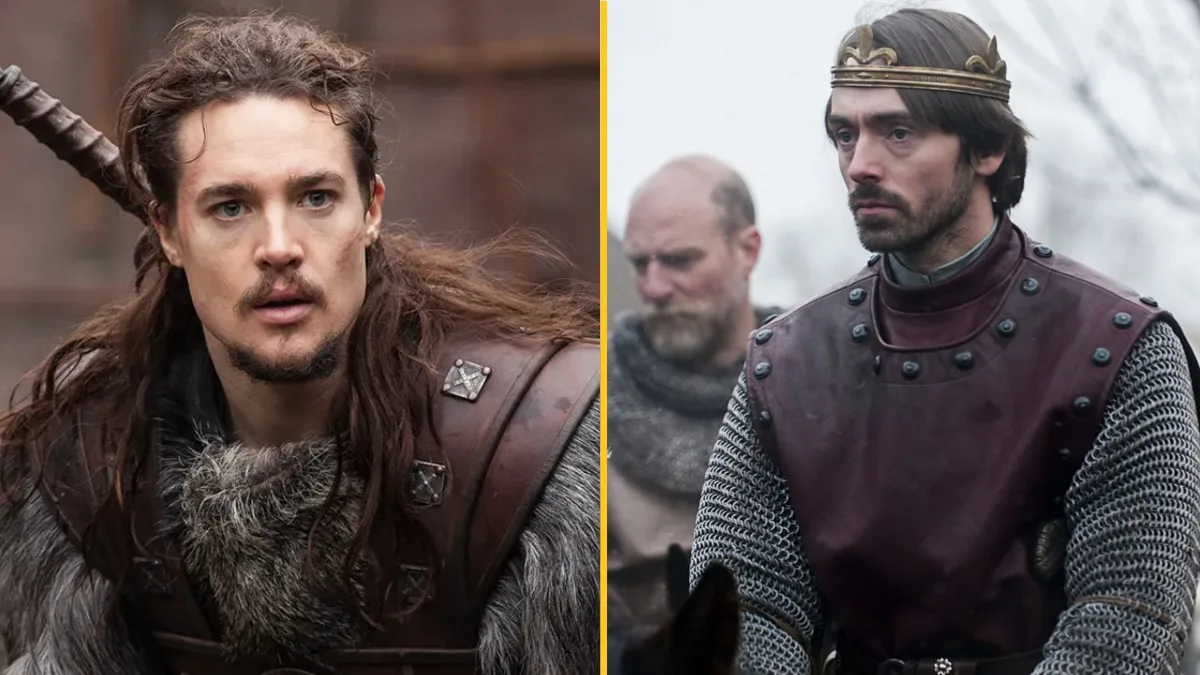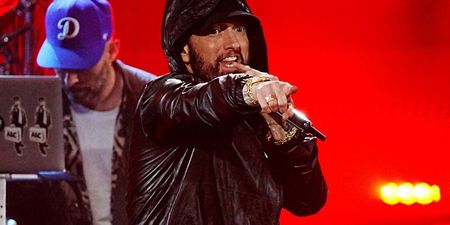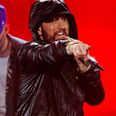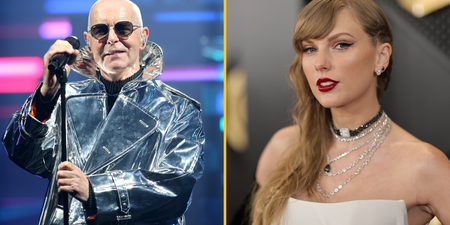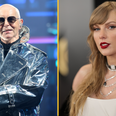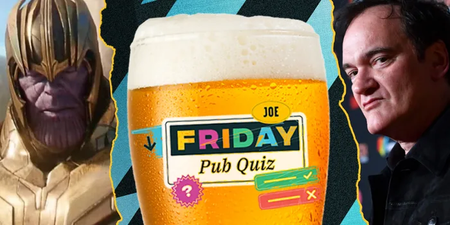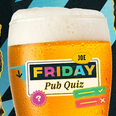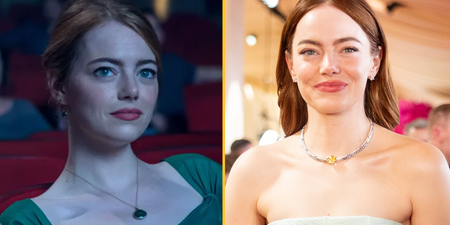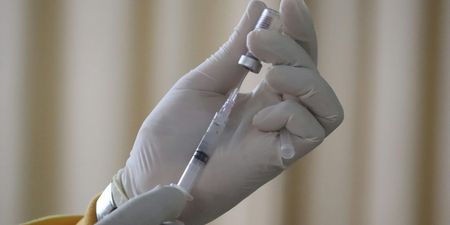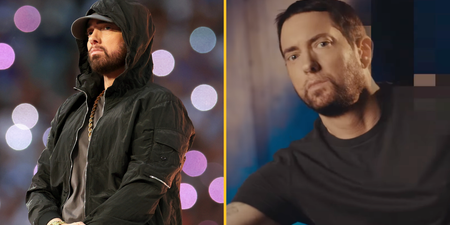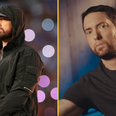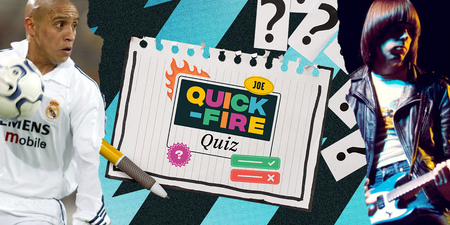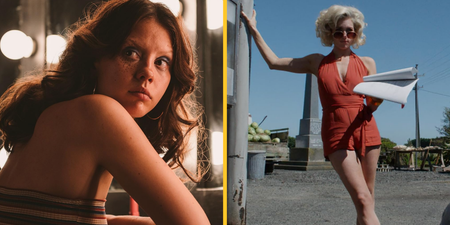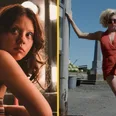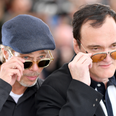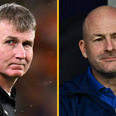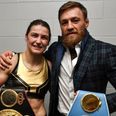JOE spoke to one of the true greats of hurling, Kilkenny’s Eddie Keher, on the most influential man in his county’s hurling history, meeting his idol Muhammad Ali and alcohol in the GAA.
Eddie Keher belongs in any conceivable configuration of the pantheon of hurling greats.
If the national sport and its modern practitioners were transported across the millennia and geography that separates it from Ancient Greece, constellations would be named after the events Keher played a pivotal part in.
His first senior championship appearance was in the 1959 All-Ireland final, the last time Waterford won the Liam McCarthy Cup.
He was part of the great Kilkenny side of Father Tommy Maher that reached ten All-Ireland finals in twelve years between 1963 and 1975.
He also achieved the positively Herculean score of 2-11 in the 1971 All-Ireland final, a feat not matched until Nicky English went a point better in 1989. Despite his heroics, Keher still ended up on the losing side that day as Kilkenny lost by 5-17 to 5-14 to Tipperary in a thunderous match.
Maybe, just maybe, that opening salvo might be slightly melodramatic and overblown, but someone has to champion Keher, as like most of Kilkenny’s hurlers, he won’t champion himself. The Kilkenny tendency of reserved modesty is evident in one of the greatest stars of the last century.
The making of a legend
Like all good mythic figures, his beginnings as one of his county’s great heroes were from unexpected origins. His father, Stephen Keher, hails from Roscommon.
“Yeah my father was from Ballydooley, County Roscommon. He joined the Guards just after independence and was posted in a few different places before ending up in Inistoge where he met my mother. That was how he came to be in Kilkenny and how I was born in Kilkenny.
“He played football actually, he played in his young days with his club in Roscommon, he was close to the county team when he went join the guards in Dublin. I know it’s not a claim to fame, but they weren’t too bad at the time when he played with the Kilkenny footballers and I think they were reasonably successful in Leinster.”
Keher says he was self-taught as he pucked a sliotar around with friends before he reached national school and a teacher called Martin Walsh refined their skills.
I don’t think comparisons can be made between different eras, but having said that it would be very hard not to say that the present Kilkenny bunch under Brian Cody are the greatest. I’d say overall they are the best team I’ve ever seen for lots of things.
Despite reports of a young Keher wowing locals with his prodigious hurling talent, he refuses to say there was anything particularly special about him that would lend you to believe he would go on to win six All-Ireland finals.
“Well I suppose you don’t look at it like that. I lived on the square in Inistoge and you would play little games there. I suppose all of us were equal in skills at that time and all of us were trying to learn new things. There wasn’t coaching to the same extent there is now, we were all just trying to figure out things ourselves.
“I would have been playing at under-14 level for a number of years since I was 8 or 9, then with the school team we won the under-14 county title when I would have been 11 in 1952 and then again in 1955, which would have been my last year on the team.”
The mentor and master
Somewhere in the midst of time Monsignor Tommy Maher’s name has been relegated to a footnote on a lot of history books of the GAA. That footnote reads, The Godfather of Kilkenny Hurling: Seven All-Ireland titles, fourteen Leinster titles. In a 21-year spell as Kilkenny coach, he revolutionised Kilkenny hurling after a barren spell of ten years without the Liam McCarthy Cup.
When Ali came in, in his tracksuit, after the run he was very quiet – very different from the TV image we have of him, but very nice and polite. I remember him saying ‘Gee, I’ve seen that game on television – that’s a dangerous game,’ and I was there thinking ‘I’ve seen Ali in the ring with Sonny Liston!’
Maher’s star closely crossed paths with Keher’s and their careers as coach and main forward set out on the same trajectory together.
Keher says he was the forbearer of all that came after in Kilkenny hurling.
Keher first met him in his second year at his secondary school, that bastion and incubator of great hurlers, St Kieran’s College in Kilkenny. Father Maher had taken a sabbatical from his teaching post in the school to pursue a Masters in Keher’s first year at the school and a fellow student from Inistoge alerted Keher that the returning cleric was a “great hurling man.”
“It’s funny you should mention him,” says Keher for reasons that would later become apparent. “Of all the people who influenced me, he was the biggest influence on my hurling career.”
High praise coming from someone who is often mentioned as the greatest hurler of all-time.
“He was brilliant. It’s hard to understand for young people today that there was little or no coaching in those days. Father Maher was doing all the coaching that they do today back in the 1950s. He was analysing, isolating and outlining the skills of the game and devising practices to perfect them.”
“He was then asked by Paddy Grace, who was the County Secretary at the time, to coach the Kilkenny senior hurling team in 1957 and over the years he really revolutionised not only Kilkenny hurling, but hurling itself with his methods and that. All the training that is done today, even though there have been changes, that all came from him really.”
Keher is nearly at pains to emphasise how influential Maher has been in Kilkenny. “The managers too, the Brian Codys, the Dermot Healys, they would’ve learnt under him and they’re just carrying on his initial work.”
Keher has a surprising answer when asked what was the secret to Maher’s success as coach, or it is surprising until you consider that it was the same tool that the Ancient Greeks used to divine the destination and movements of the constellations and stars.
“Maths. He was a mathematician in his academic background, he taught me maths in Kieran’s,” Keher says simply before expanding. “He had a mathematical mind; he’d be in his room weighing sliotars and looking at them, hurls too, and he’d work out what was the best way to do a skill and then he’d bring that to the training ground.”
Keher sees some coincidence, or providence, in being asked about Maher in the interview as his lack of profile is something Keher has considered in his current role within Kilkenny hurling.
“It’s funny that you asked me about him as there’s a book in the printers at the moment that’s coming out about him by Enda McEvoy at the end of June. Not much has been said or written or told about him so the Kilkenny Supporter’s club, of which I’m vice-president, instigated this.
“We felt this needed to be out and the work he has done needed to be highlighted.”
The hero’s first All-Ireland final
All ancient heroes had to face tests and tasks before their names were written into the stars by wise-soothsayers. Hercules had to perform his twelve labours, Jason had to retrieve to Golden Fleece, Perseus had to kill Medusa and so on.
Keher’s first challenge was a failure as he unexpectedly faced Waterford and their own fabled hero, Tom Cheasty, in the Deise’s last All-Ireland win in the replay of 1959.
“We won the Colleges’ All-Ireland under Father Tommy Maher in 1959; it was also my fourth year on the minor team. We were beaten in the final by Tipperary, so I didn’t have a minor medal, which was a major disappointment.
The senior final was a draw that year between Kilkenny and Waterford – the last drawn All-Ireland hurling final – on the same day as the minor final! I was asked onto the panel from the minor team to the senior team for the replay.”
Keher lists off his own heroes of that team who had claimed their first All-Ireland in ten years in 1957.
“You can imagine as a seventeen year-old for me to go into training and the dressing-room!
“Obviously I knew Father Maher so that was a help, but I was togging out with legends of the time like Ollie Walsh and Seánie Clohessy, Johnny McGovern and Paddy Buggy, all legends of the time and now I was in training with them.”
It was another disappointment for Keher in’59. He did bag himself two points, but Tom Cheasty bettered that score with 2-2. Kilkenny lost 3-12 to 1-10.
“I came on as a sub about ten or fifteen minutes into the final. To say it was a disappointing ending for Kilkenny is putting it mildly, but obviously it was a great occasion for me to play with Kilkenny. “
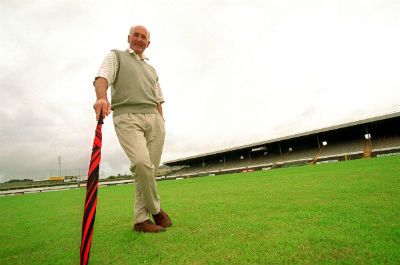
A victory for the world to witness
Keher got a measure of revenge as he faced Waterford again in his first All-Ireland final win in 1963, which Kilkenny won by a score of 4-17 to 6-8. Keher racked up the first of his monstrous All-Ireland final scores, registering 14 points in the second ever GAA game to be televised. What was that like?
“’Twas something that was new and fresh and exciting, but obviously from a hurling point of view, that all had to be blanked out and Father Maher would done a good job of keeping us concentrating on the hurling.
“God I’d love to know what happened to tapes, there wasn’t any Sky remote or tape recorder in those days. We got to see some shots of it afterwards and ’twas good to see it.”
You mention that Kilkenny hurlers even today seem so single-minded and focused, devoid of any self-congratulation or hubris. What is it about men in the Black and Amber?
Keher laughs. “I don’t know, maybe it’s what we were talking about earlier, Father Maher’s influence on preparation on all the coaches that came after, they all came under his wing.”
Facing impossible odds
There are so many great moments and improbable scores that have been associated with Keher’s career. He scored 2-11 and still ended up on the losing side against Tipperary in 1971, though Keher’s record score in an All-Ireland final wouldn’t be bested until 1989 when Nicky English went one point better against Antrim.
Keher’s performance in the 1972 final, scoring a mere 2-9 against Cork, ranks as one his greatest achievements. The tie was a glamorous one, pitting the 1970 winners (Cork) against the 1971 runners-up (Kilkenny).
Keher remembers Cork racing away in the lead as he was originally placed in the full-forward line having lost a yard of pace and he was being marked that day by Tony Maher.
“I remember one of the selectors that day coming in behind the goals and switching me back out to half-forward and just at that point I saw Liam “Chunky” O’Brien getting the ball and I dashed out towards the half-forward line with Tony following me out. Liam hit a low pass out to me and I gathered it up and soloed it down the left-wing and hit a speculative shot that ended up in the Cork goal.
“I think Paddy Barry in the Cork goal was going to bat it out or catch it, but it sort of spun off his hurl into the net,” says Keher before recalling one of the iconic images of the day. “I remember turning when I took that shot and getting an accidental tip by Tony’s hurl as I did. I think there’s still that shot of me with blood trickling down my face from my forehead.”
Despite that goal, Kilkenny were still facing an up-hill battle. “Cork were way ahead of us at that stage and hurling is a cruel game really. I remember Con Roach getting a ball out around midfield – he was playing half-back – and putting it over the bar and that put them eight or nine points ahead.
“From a Cork point of view I think they thought they had it, but from our point of view we looked at it saying ‘This our chance now, while their guard is down, to take them on’ and we did take them on and I don’t think they scored again after that and we won by a good few scores.
“It was probably one of the games that would stand out because of the way it swung from Cork being totally on top to us coming back and winning comfortably in the end.”
Kilkenny won by 3-24 5-11.
Yesterday’s legends or today’s heroes
The Kilkenny team of today also had many classic battles with Cork prior to winning five out of the last six All-Ireland titles. How do they compare to his team?
“I don’t think comparisons can be made between different eras, but having said that it would be very hard not to say that the present Kilkenny bunch under Brian Cody are the greatest. I’d say overall they are the best team I’ve ever seen for lots of things.”
Keher mentions their honesty, skill and determination on the pitch as well as their conduct off it, which he has witnessed first-hand on trips as Vice President of the Supporters Club to New Zealand, Malaysia and South Africa, and holds them up as examples of truly great sportsmen.
He says, though, that the team had to beat Tipperary last year and there was an extra sizzle to that match.
“I would say they definitely had to beat Tipp, because Tipp were sort of claiming that they should have won two years ago and they won in 2010 – so Kilkenny felt they had to set the record straight from their point of view,” says Keher before paying tribute to the current Tipp side. “It was a fantastic game and Tipp are a fantastic team as well and they have provided everyone with entertainment for three fantastic finals.”
The Hurling Pantheon of Heroes
Keher has been called ‘Steady Eddie’ in the past and his answers to questions over who are the greatest sides or players are always tempered by the fair consideration that it’s hard to compare across the eras.
“You could list off so many (players) though. Henry Shefflin and DJ Carey from our county certainly, Nicky English certainly, there’s so many you could list off,” he says before singling out one hero of his childhood.
“I saw the end of Christy Ring, when we were growing up Christy Ring was the idol of hurling people,” he says before recalling one poignant occasion.
“His peak was in the early fifties and I wouldn’t have seen that much of him as Tipp and Waterford took over in Munster. Cork were out of the Championship until 1966, but Kilkenny did play them in a league final in ’62 and ’twas Christy’s last final of any description I suppose.
“He played at full-forward and it was a huge honour for us to play on the same field as him.”
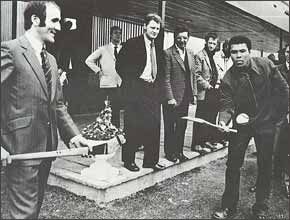
The Greatest
Talk of greatness naturally leads the conversation to turn to an encounter Keher had with Muhammad Ali nearly forty years ago ahead of the boxing legend’s fight in Croke Park with Al ‘Blue’ Lewis.
There are still pictures of Keher attempting to teach Ali how to hurl as they did some promotional work together ahead of the fight.
“Oh I have very fond memories of that. You mentioned my father earlier, he had a huge interest in boxing! He used to get me up at all hours of the morning to listen to crackly radio broadcasts of Joe Louis and people like that, and of course Muhammad Ali, or as he was then, Cassius Clay.
“Ali was a huge idol of mine so I was absolutely thrilled when I got the call to see if I could come out to do a bit of promotion in the hotel for his fight.”
When Keher arrived at the hotel Ali was out jogging, so Keher spent the time chatting to his legendary trainer Angelo Dundee, who passed away earlier this year.
“When Ali came in, in his tracksuit, after the run he was very quiet – very different from TV image we have of him, but very nice and polite,” says Keher before continuing: “I remember him saying ‘Gee, I’ve seen that game on television – that’s a dangerous game,’ and I was there thinking I’ve seen Ali in the ring with Sonny Liston!” Keher laughs, referencing Ali’s two bouts against one of the most vicious and feared fighters of all time.
“He wanted to be shown some of the skills. I was showing him the basic skills of rising the ball and eventually, after lots of tries, he got it off the ground and then we tried to hit it. He obviously got very frustrated!”
There was some time for a bit of frivolity between the two greatest exponents of their respective sports at that time and possibly of all time too.
“He came up close to me one time and he said ‘Let’s put on a show for these guys’ and he then became the Muhammad Ali I knew from television and started fencing with me with the hurls! He tried to hit me with the hurl more or less, I’ve got a lot of great photos of that event you know,” says Keher, recalling the occasion with fondness.
“He was a lovely guy, he still is, and a wonderful showman and promoter of boxing, but I got to see both sides of him that day.”
A legend in twilight
Keher retired from AIB a number of years ago and he is enjoying his time off at moment. After the interview he has plans to go golfing and improve his handicap. He “has things to work on” he says, disappointed that his handicap has gone up to nine of late.
One of the differences Keher may find from the heroes and demi-gods of ancient times is their predilection to gorge themselves on drink and revel in their past glories once their heroic deeds are done.
Keher, like most Kilkenny hurlers, is too modest to brag about his achievements and one of his projects after retiring from hurling was to help found the No Name Club, an organisation to promote alternative social activities for young people other than drinking. It now has around 50 branches nationwide.
Is he uneasy then with the GAA’s association with drink and the sponsorship of major drink companies over the years?
“It’s a current topic at the moment with drink companies sponsoring sporting events and bodies, which is obviously contradictory to what sports are supposed to be doing, which is to have a healthy body and a healthy, social, athletic outlet, but sponsorship is a very thorny issue,” Keher says before expanding to elaborate on the No Name Club’s mission.
“I can see where both sides are coming from. In the No Name Club we decided from the outset not to be anti-drink; we are a positive organisation, all we do is provide an alternative. Myself and the other founders are very proud of what we have achieved and what it (the organisation) continues to achieve.
“I hope I’m not side-stepping the issue!”
No he’s not, as usual Eddie Keher has made his point in an understated style that still earns the admiration of many who saw him play.
